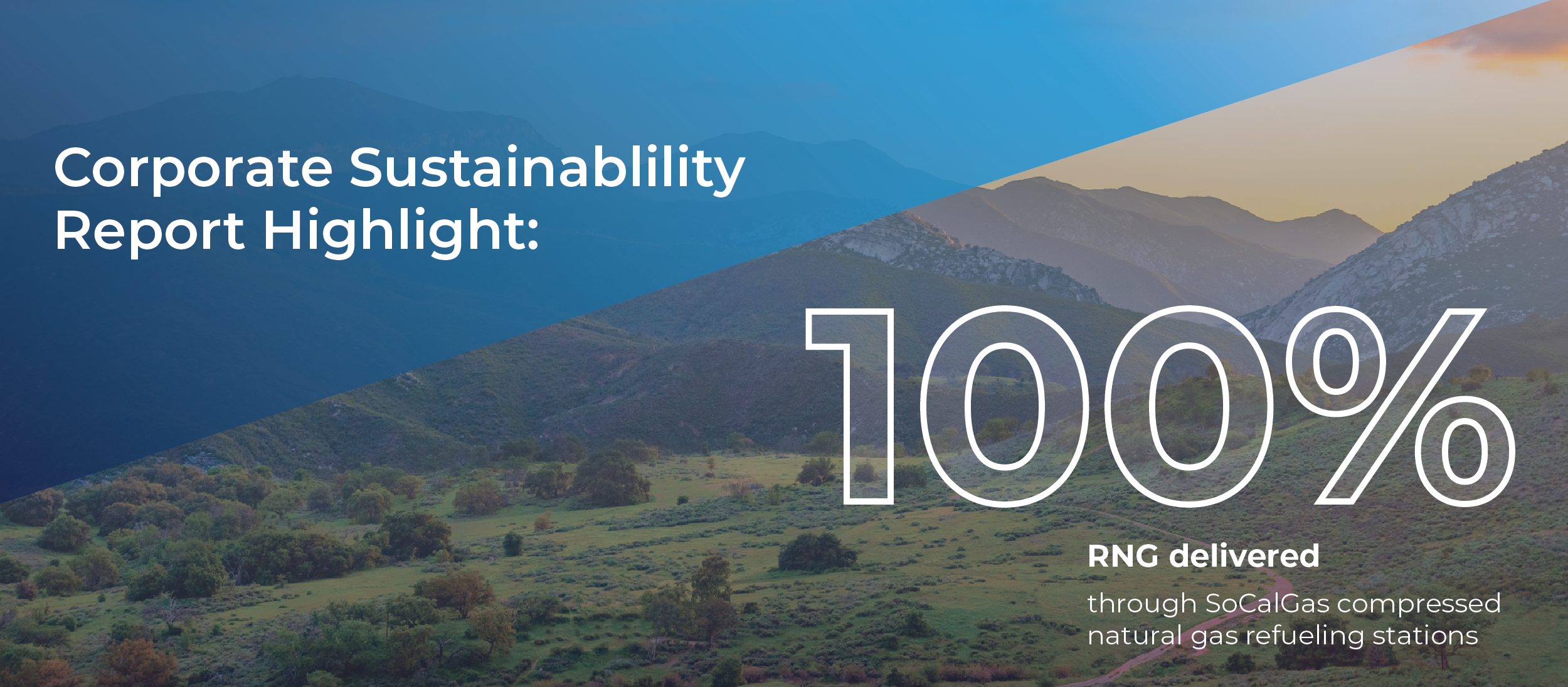LOS ANGELES – Southern California Gas Company (SoCalGas) released its stand-alone chapter of parent company Sempra’s 2023 Corporate Sustainability Report today, demonstrating SoCalGas’ dedication to keeping stakeholders informed on the progress of its sustainability strategy, key milestones, and achievements. SoCalGas’ ASPIRE 2045 sustainability strategy aligns with Sempra’s sustainable business strategy to invest in safe and resilient operations, engage people and communities, and innovate for the future. The report details SoCalGas’ ongoing sustainability efforts that support its aim to achieve net-zero greenhouse gas emissions in its operations and delivery of energy by 2045. It also highlights the utility’s efforts to modernize its system infrastructure, support the continued development of clean fuels, enhance energy access and affordability, and invest in local communities and its workforce.

Click here to read the SoCalGas Corporate Sustainability Report chapter.
“Sustainability is a fundamental part of our business strategy. The progress in this report represents our next step in an exciting evolution in serving customers and communities while reducing greenhouse gas emissions, promoting energy efficiency and resiliency, and advancing California’s climate goals,” says Jawaad Malik Chief Strategy and Sustainability Officer at SoCalGas. “Our ASPIRE 2045 sustainability strategy focuses on key areas where we can create strong positive benefits for our customers, employees, and the communities we serve.”
2023 report highlights:
• Approximately 39% reduction in methane emissions1 through 2022 surpassing 2025 state goal of 20% and nearing 2030 goal of 40%2
• 100% green tariff enrollment for grid-connected company facilities where local electric utility green tariff program is available3
• 38% alternative fuel vehicle conversion of over-the-road-fleet, with aim of 100% zero emission over-the-road fleet vehicles by 2035
• 100% eligible customers enrolled in support program, enhancing energy access and affordability4
• 100% Renewable Natural Gas (RNG) delivered through SoCalGas compressed natural gas refueling stations
• 10 RNG interconnections supplying renewable gas to SoCalGas’ pipeline network
• 47.3 million therms avoided by customers through energy efficiency programs – equivalent to the annual gas consumption of approximately 118,000 homes
• 26% reduction in pipeline excavation damage rate from a 2020 baseline, supporting safety and progressing toward a 2030 target of 40% reduction5
• $1.02 billion spent with diverse suppliers making up 44% of total procurement, including 152 new diverse firms in 2023, totaling $54 million dollars6
"Thanks to SoCalGas' Climate Champions Grant program, our organization was better equipped to take on ecosystem degradation in the Santa Monica Mountains and increase biodiversity while creating employment opportunities for disadvantaged youths with limited resources," said Deanna Armbruster, Executive Director at Santa Monica Mountains Fund. "SoCalGas' sustainability investments continue to play a vital role in fostering community development, promoting environmental stewardship, and improving the well-being of in our local communities."
SoCalGas is a leader among utilities in its sustainability goals and was among the first and largest natural gas distribution utilities in the United States to announce its aim to achieve net-zero greenhouse gas emissions by 2045. Additionally, SoCalGas’ energy efficiency programs are some of the largest in the United States. The utility recently earned the ENERGY STAR “Partner of the Year Award” by the U.S. Environmental Protection Agency (EPA) for the second consecutive year and was a founding member of the EPA Natural Gas Star Program in 1993, voluntarily implementing technologies and practices to reduce methane emissions.
SoCalGas was also recently honored with the top “Business Transformation Award” from Reuters Events for establishing transformative sustainability priorities that have the potential to create impact at scale in their sector and beyond. One such transformative effort, SoCalGas’ [H2] Innovation Experience, a clean hydrogen microgrid demonstration project, has been named a World-Changing Idea by Fast Company and was also awarded the U.S. Green Building Council of L.A.’s Sustainable Innovation Award.
Learn more about SoCalGas’s sustainability efforts at https://www.socalgas.com/sustainability.
About SoCalGas
Headquartered in Los Angeles, SoCalGas is the largest gas distribution utility in the United States. SoCalGas aims to deliver affordable, reliable, and increasingly renewable gas service to approximately 21 million consumers across approximately 24,000 square miles of Central and Southern California. We believe gas delivered through our pipelines plays a key role in California's clean energy transition by supporting energy system reliability and resiliency and enabling integration of renewable resources.
SoCalGas' mission is to build the cleanest, safest and most innovative energy infrastructure company in America. In support of that mission, SoCalGas aspires to achieve net-zero greenhouse gas emissions in its operations and delivery of energy by 2045 and to replace 20 percent of its traditional natural gas supply to core customers with renewable natural gas (RNG) by 2030. RNG can be made from waste created by landfills and wastewater treatment plants. SoCalGas is also investing in its gas delivery infrastructure while working to keep bills affordable for customers. SoCalGas is a subsidiary of Sempra (NYSE: SRE), an energy infrastructure company based in San Diego.
For more information visit socalgas.com/newsroom or connect with SoCalGas on X (formerly Twitter) (@SoCalGas), Instagram (@SoCalGas) and Facebook.
This press release contains forward-looking statements within the meaning of the Private Securities Litigation Reform Act of 1995. Forward-looking statements are based on assumptions about the future, involve risks and uncertainties, and are not guarantees. Future results may differ materially from those expressed or implied in any forward-looking statement. These forward-looking statements represent our estimates and assumptions only as of the date of this press release. We assume no obligation to update or revise any forward-looking statement as a result of new information, future events or otherwise.
In this press release, forward-looking statements can be identified by words such as “believe,” “expect,” “intend,” “anticipate,” “contemplate,” “plan,” “estimate,” “project,” “forecast,” “envision,” “should,” “could,” “would,” “will,” “confident,” “may,” “can,” “potential,” “possible,” “proposed,” “in process,” “construct,” “develop,” “opportunity,” “preliminary,” “initiative,” "target," "outlook," “optimistic,” “poised,” “positioned,” “maintain,” “continue,” “progress,” “advance,” “goal,” “aim,” “commit,” or similar expressions, or when we discuss our guidance, priorities, strategy, goals, vision, mission, opportunities, projections, intentions or expectations.
Factors, among others, that could cause actual results and events to differ materially from those expressed or implied in any forward-looking statement include: decisions, investigations, inquiries, regulations, denials or revocations of permits, consents, approvals or other authorizations, renewals of franchises, and other actions, including the failure to honor contracts and commitments, by the (i) California Public Utilities Commission (CPUC), U.S. Department of Energy, U.S. Internal Revenue Service and other regulatory bodies and (ii) U.S. and states, counties, cities and other jurisdictions therein where we do business; the success of business development efforts and construction projects, including risks related to (i) completing construction projects or other transactions on schedule and budget, (ii) realizing anticipated benefits from any of these efforts if completed, (iii) obtaining third-party consents and approvals and (iv) third parties honoring their contracts and commitments; macroeconomic trends or other factors that could change our capital expenditure plans and their potential impact on rate base or other growth; litigation, arbitrations and other proceedings, and changes to laws and regulations, including those related to tax and trade policy; cybersecurity threats, including by state and state-sponsored actors, of ransomware or other attacks on our systems or the systems of third parties with which we conduct business, including the energy grid or other energy infrastructure; the availability, uses, sufficiency, and cost of capital resources and our ability to borrow money on favorable terms and meet our obligations, including due to (i) actions by credit rating agencies to downgrade our credit ratings or place those ratings on negative outlook, (ii) instability in the capital markets, or (iii) rising interest rates and inflation; the impact on affordability of our customer rates and our cost of capital and on our ability to pass through higher costs to customers due to (i) volatility in inflation, interest rates and commodity prices and (ii) the cost of meeting the demand for lower carbon and reliable energy in California; the impact of climate and sustainability policies, laws, rules, regulations, trends and required disclosures, including actions to reduce or eliminate reliance on natural gas, increased uncertainty in the political or regulatory environment for California natural gas distribution companies, the risk of nonrecovery for stranded assets, and uncertainty related to emerging technologies; weather, natural disasters, pandemics, accidents, equipment failures, explosions, terrorism, information system outages or other events, such as work stoppages, that disrupt our operations, damage our facilities or systems, cause the release of harmful materials or fires or subject us to liability for damages, fines and penalties, some of which may not be recoverable through regulatory mechanisms or insurance or may impact our ability to obtain satisfactory levels of affordable insurance; the availability of natural gas and natural gas storage capacity, including disruptions caused by failures in the pipeline system or limitations on the withdrawal of natural gas from storage facilities; and other uncertainties, some of which are difficult to predict and beyond our control.
These risks and uncertainties are further discussed in the reports that the company has filed with the U.S. Securities and Exchange Commission (SEC). These reports are available through the EDGAR system free-of-charge on the SEC's website, www.sec.gov, and on Sempra’s website, www.sempra.com. Investors should not rely unduly on any forward-looking statements.
Sempra Infrastructure, Sempra Infrastructure Partners, Sempra Texas, Sempra Texas Utilities, Oncor Electric Delivery Company LLC (Oncor) and Infraestructura Energética Nova, S.A.P.I. de C.V. (IEnova) are not the same companies as the California utilities, San Diego Gas & Electric Company or Southern California Gas Company, and Sempra Infrastructure, Sempra Infrastructure Partners, Sempra Texas, Sempra Texas Utilities, Oncor and IEnova are not regulated by the CPUC.
1 Based on third-party verification under ISO 14064-3:2019 Standard using a 2015 baseline calculation of methane emissions (leaks and vented emissions) through 2022.
2 Based on goals established in Senate Bill (SB) 1371 and SB 1383
3 Reflective of facilities where local electric utility green tariff program is available, representing approximately 86% of all grid-connected company facilities.
4 The California Alternative Rates for Energy (CARE) Program is available for eligible low-income customers to receive a 20% discount on their natural gas bill. The California Public Utilities Commission (CPUC) sets CARE enrollment rate goals for each regulated utility, which may vary by year. 2023 figures reflect enrollment rates of 110% for SoCalGas, calculated based on actual customer enrollment against an estimated total of income-eligible customers as determined and defined by the CPUC.
5 Attaining the 2030 target will require continued program expansion including hiring additional Damage Prevention Analysts and implementing improvement initiatives such as the 811 Ambassador Program.
6 Reflects the categories subject to the CPUC’s General Order 156














